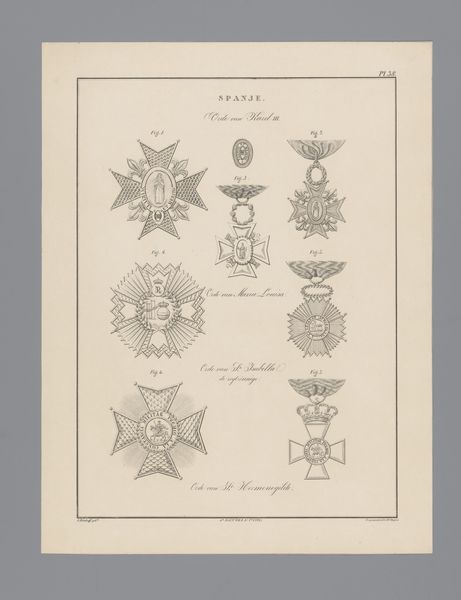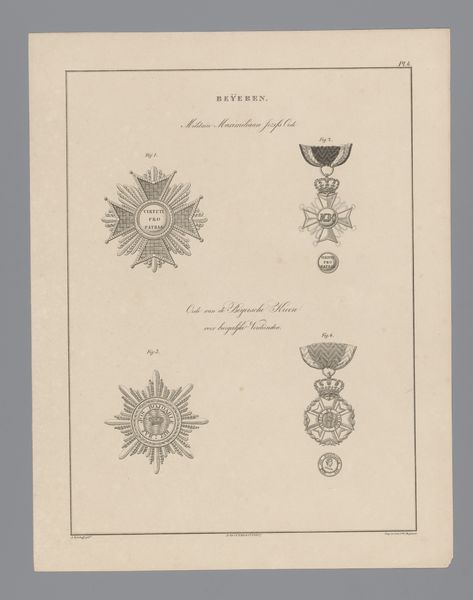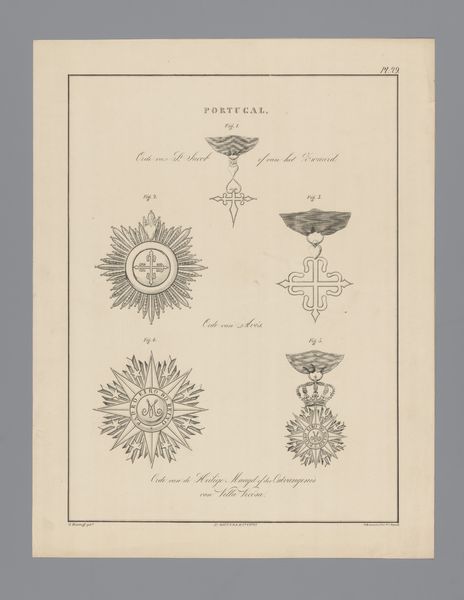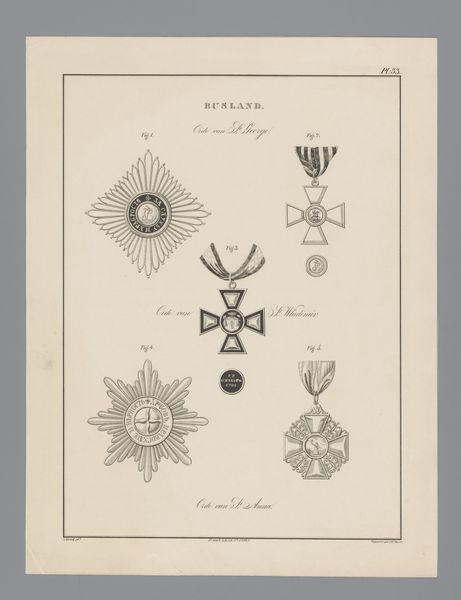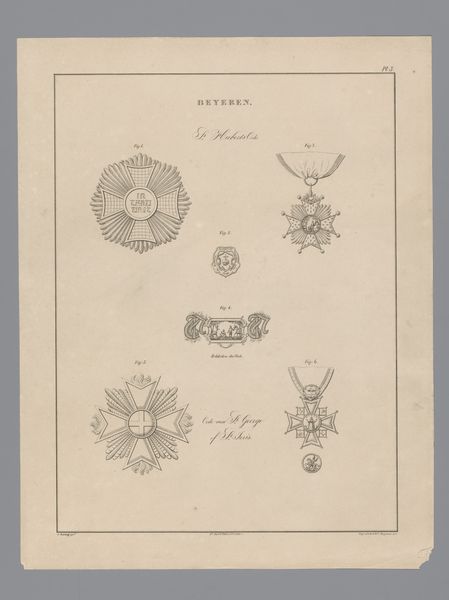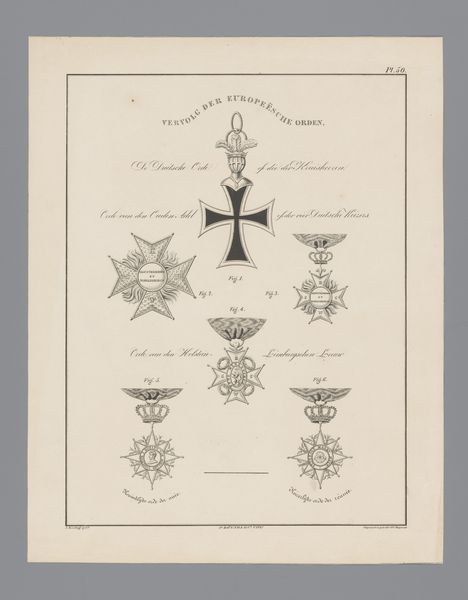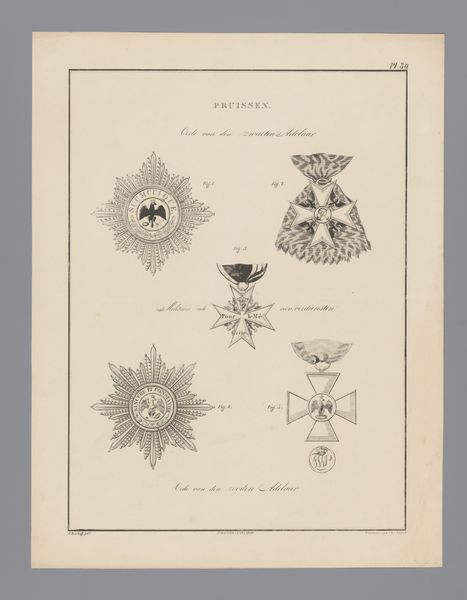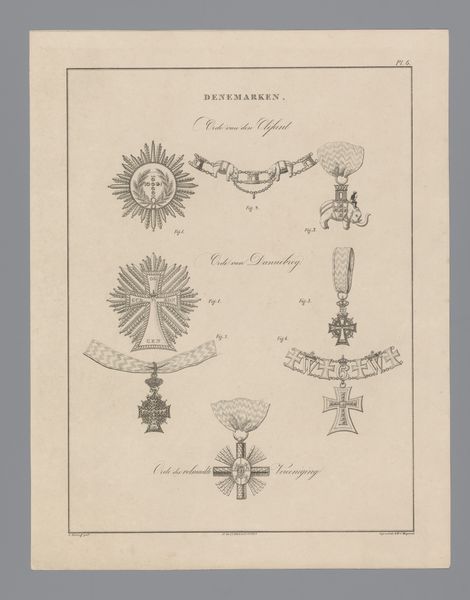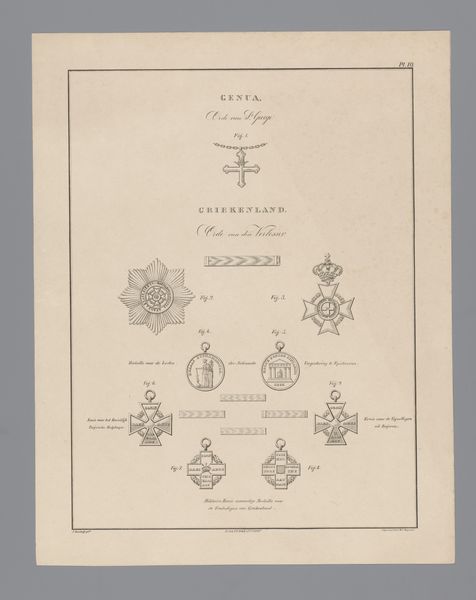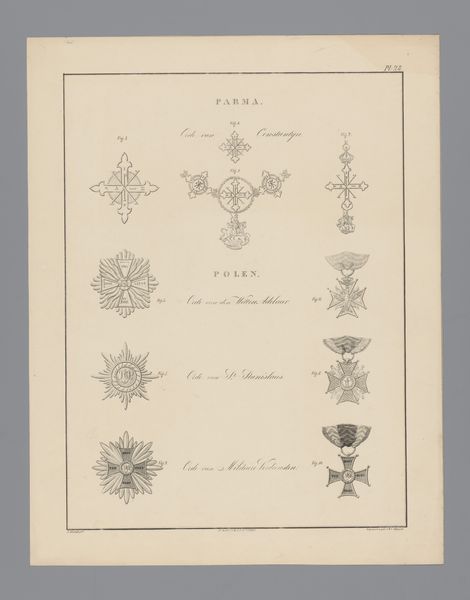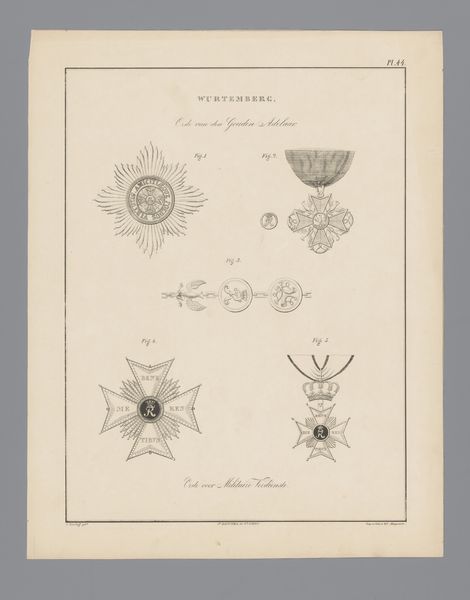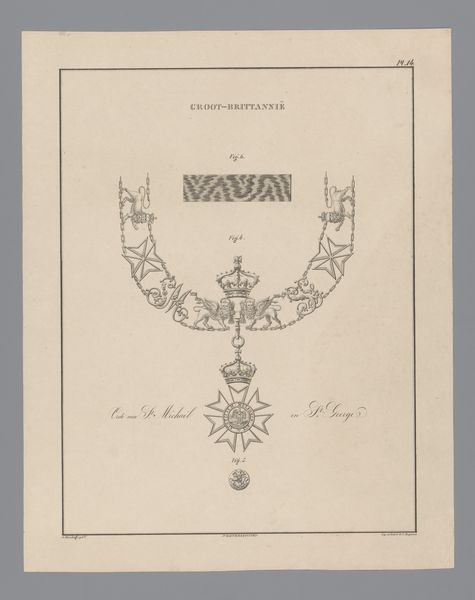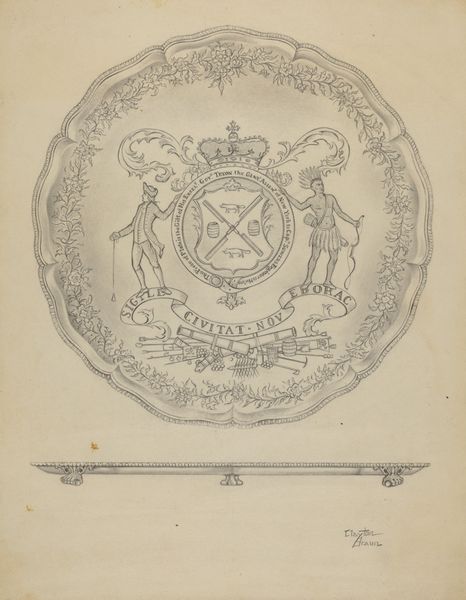
graphic-art, print, engraving
#
graphic-art
# print
#
geometric
#
line
#
history-painting
#
academic-art
#
engraving
Dimensions: height 410 mm, width 320 mm
Copyright: Rijks Museum: Open Domain
Curator: At first glance, I find the level of detail extraordinary. It's quite austere, but there is almost a scientific approach with all the depictions of different Saxon medals. Editor: You're looking at "Ridderorden uit Saksen," or "Orders of Knighthood from Saxony," an engraving by Willem Charles Magnenat, created in 1843. It resides here at the Rijksmuseum. And yes, the detail achieved in a print is quite remarkable. I'm particularly drawn to the ways these orders served as visual propaganda. Curator: Propaganda is a strong word, but these pieces undeniably show that these awards would need craftsmanship as evidence of the means of production. Look closely; they would have been intricate to manufacture. Think about the metals, the enamels, the workshops dedicated to producing these symbols. It’s about controlling labor as much as it’s about promoting the state. Editor: Agreed, and that labor certainly projected an image of power and prestige, intended to inspire loyalty and reinforce the social hierarchy of the time. Consider the social and political atmosphere. The orders denoted specific tiers within society, visible markers of one’s contribution and standing to the Saxon elite. Curator: How fascinating to look at the idea of status symbols using these prints. Were these made available so one could shop for what one thought would represent status best? The dissemination of knowledge through engravings. I find the contrast in the image’s functionality to be fascinating. Editor: Absolutely, the availability of this work facilitated understanding the order within the government. It reinforces, again, who is on top and who is beneath the ruling family and the hierarchy below. It reinforces their reign! The institutions backing this—from the monarchy to the engraver himself—are all complicit. Curator: That’s the clever trick here isn't it? To show how this engraving does so much to preserve hierarchy as objects produced through laborious techniques would do in 3D space. A print made to uphold class status! Editor: Indeed. Studying an artwork like this gives insight into how visuals can act as agents of control and conformity within their historical framework. Curator: And my look at material culture brings it home just how literally such reward systems functioned on a human and workshop level. Editor: A compelling point. Magnenat's work provides a fascinating lens to explore how both production and historical representation intersect.
Comments
No comments
Be the first to comment and join the conversation on the ultimate creative platform.
